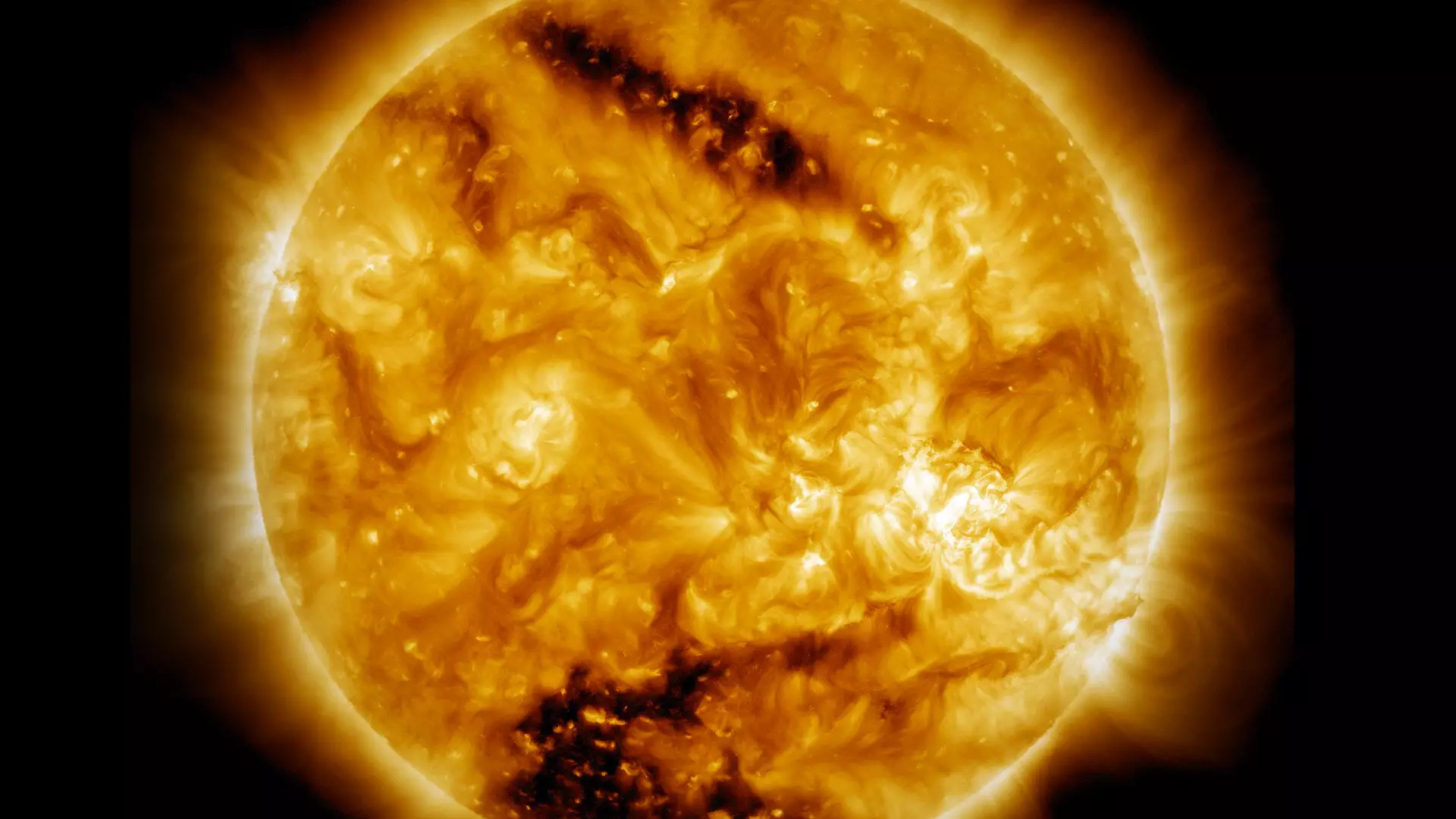The sun continues to fascinate scientists and laypeople alike, serving as a constant reminder of the complex and mysterious workings of our universe. A particularly perplexing puzzle lies in the striking difference in temperature between the sun’s surface and its outer atmosphere, the solar corona. While the sun’s surface boasts a blistering temperature of approximately 10,000 degrees Fahrenheit, the solar corona’s temperature skyrockets to around 2 million degrees Fahrenheit. This disparity—approximately 200 times hotter—has puzzled the scientific community since the phenomenon was first noted in 1939.
Since the discovery of the corona’s extreme heat, researchers have ventured to decipher the mechanisms underlying this unexpected phenomenon. Despite numerous theories and extensive studies over decades, the scientific community has remained largely in the dark regarding how the sun’s outer atmosphere reaches such elevated temperatures. Recent advancements led by Sayak Bose and his team at the U.S. Department of Energy’s Princeton Plasma Physics Laboratory (PPPL) have rekindled hope in cracking this intriguing mystery.
In a groundbreaking study published in *The Astrophysical Journal*, the team provided insights regarding a potential heating mechanism involving reflected plasma waves. The significance of this research cannot be overstated; it marks a pivotal step towards demystifying one of the sun’s most captivating enigmas.
The study focused on coronal holes—regions within the solar corona characterized by low plasma density and open magnetic field lines that extend into the far reaches of interplanetary space. The link between these coronal features and extreme temperatures had been hypothesized but remained unproven until now.
Bose’s research suggests that Alfvén waves, which were first theorized by the renowned physicist and Nobel laureate Hannes Alfvén, play a critical role in this heating process. Alfvén waves, akin to vibrations of a plucked guitar string, arise from the dynamics of wiggling magnetic fields in a plasma environment. By employing the Large Plasma Device (LAPD) at UCLA, the researchers created conditions that simulate those around coronal holes, ultimately demonstrating that the reflection of Alfvén waves could contribute to the heating of these regions.
The experimental design involved a 20-meter-long plasma column where Alfvén waves were generated and studied. As these waves intersect areas of fluctuating plasma density and magnetic intensity—conditions reminiscent of those found in the solar corona—they can bounce back towards their source. This reflection results in turbulence, leading to increased thermal energy within the corona.
As Jason TenBarge, a contributing researcher at the PPPL, pointed out, the significance of these findings lies in their validation of long-held hypotheses regarding Alfvén waves. The laboratory results provided the first experimental confirmation that not only do these waves reflect, but they also possess enough energy to heat the coronal holes, thus bridging a gap in our understanding of solar dynamics.
Alongside their laboratory experiments, the research team conducted computer simulations to further substantiate their findings. The dual approach of physical and computational analysis adds a robust layer of credibility to their conclusions. Bose emphasized the importance of multiple verification steps in the research process, underscoring how laboratory experiments and simulations together advance our comprehension of natural phenomena like those occurring in our sun.
This landmark research opens the door to further inquiries into solar physics, specifically regarding how energy is transported in the corona and how it affects solar wind and other interstellar phenomena. As scientists continue to investigate these remarkable findings, the knowledge gleaned from such studies will undoubtedly enhance our understanding of not just our sun but also other stars and the broader universe.
The enigma of the solar corona remains a captivating frontier in astrophysical research. While significant strides have been made, the quest for an entirely comprehensive theory continues. Still, the work of Sayak Bose and his collaborators stands testament to the power of scientific inquiry and experimental validation. As our tools and methodologies evolve, so too will our insights, leading us ever closer to unraveling the cosmic mysteries that lie beyond our planet.

